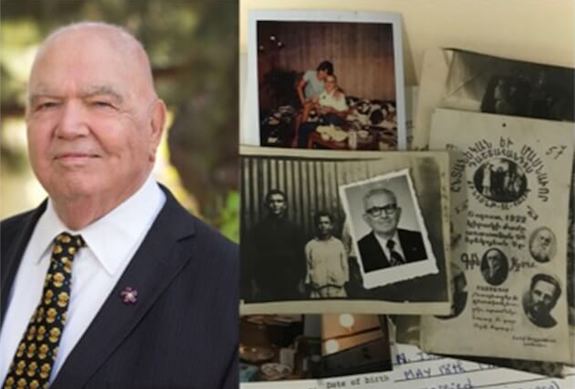USC Shoah Foundation has received one of the largest collections of testimonies from survivors of the Armenian Genocide that were recorded over decades by Dr. Richard Hovannisian, a leading scholar on the Armenian Genocide.
The Richard G. Hovannisian Armenian Genocide Oral History Collection was officially announced as a part of the Visual History Archive at a ceremony on Friday.
The Shoah Foundation announced that a pilot of 10 new Armenian testimonies – seven in English and three in Armenian – are available to the public in the Institute’s Visual History Archive Online. The rest will be added as they are digitized and indexed to the high standards used by the Institute. To listen, go to the Visual History Archive Online, (register for free, and select the box that says “Richard G. Hovannisian Armenian Genocide Oral History Collection”).
The more than 1,000 interviews will constitute the largest non-Holocaust-related collection to be integrated into the Institute’s Visual History Archive. It will also be the Archive’s first audio-only collection.
Initially, a pilot of 10 testimonies – seven in English and three in Armenian – will be available to the public on March 9 in the Institute’s Visual History Archive. The rest will be added as they are digitized and indexed to the high standards used by the Institute.
In addition to the audiotapes recorded in a variety of formats, the new collection includes documents and photographs corresponding to each interview, transcripts and translations that Hovannisian and his students put together over the years.
The vast majority of the collection was recorded in Armenian, but up to 20 percent of the testimonies are in English; there is a smaller portion of Turkish and Spanish language interviews.
The son of a genocide survivor, Hovannisian believes deeply in the power of testimony as a tool to educate, combat denial, and communicate the magnitude of a criminal scheme that claimed an estimated 1.5 million Armenian lives. But numbers alone don’t begin to tell the story.
“The figure ‘a million and a half’ can roll right over our shoulders,” he said. “But it’s different when you take those individual interviews and start listening to them one by one. And then it becomes a million-and-a-half individuals and the loss of a civilization, of a way of life, a space where people lived for more than 3,000 years, and everything that space contained.”
The Institute also houses the Armenian Film Foundation’s collection of Armenian Survivor testimony, which was fully integrated into the Visual History Archive in late 2016.
“By adding more context to the Visual History Archive, we continue to honor the memories of those whose lives were needlessly taken,” said USC Shoah Foundation Vinci-Viterbi Executive Director Stephen Smith. “These voices will help ensure future generations will learn from those who experienced the horrors of the Armenian Genocide.”
The Armenian Film Foundation’s collection of testimonies was recorded by J. Michael Hagopian for the purpose of making documentaries about one of the earliest genocides of the 20th century. By contrast, Hovannisian, a professor emeritus of Armenian History at UCLA, had a more academic approach. His testimonies typically exceed an hour and feature a wide range of questions about the survivor’s entire life history.
Hovannisian, who collected the testimonies from 1972 to the 2000s, also interviewed some children and grandchildren of survivors in the later years of the project.
Richard Hovannisian was one of the founders of Armenian Studies as a discipline in the United States, producing numerous articles and books that are considered foundational, while also training young scholars who went on to become experts in the study of Armenia from ancient to modern times. He is currently professor emeritus at UCLA, adjunct professor at USC and presidential fellow at Chapman University.




















































